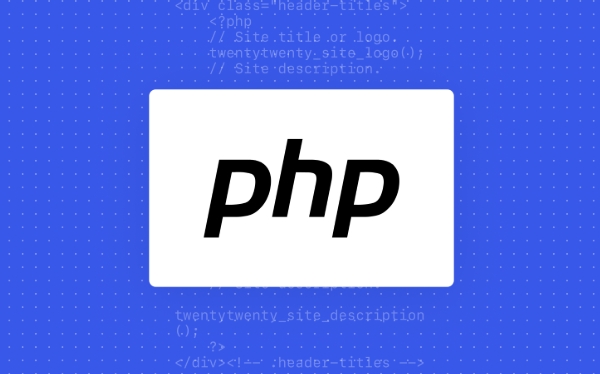How to store PHP sessions in Redis or Memcached?
Jul 12, 2025 am 02:09 AMUsing Redis or Memcached instead of default file storage improves PHP session performance and scalability, reasons include: 1. The file locking mechanism is prone to blocking; 2. The session sharing is not supported across servers; 3. The cleaning mechanism is inflexible. Redis and Memcached are memory-based storage, fast speed, support expiration mechanisms, and are suitable for distributed environments. The configuration steps are: install the corresponding extension and modify the parameters such as session.save_handler and session.save_path in php.ini. Redis supports persistence and is more reliable, while Memcached is lighter and suitable for caching. Notes include: 1. Set the connection failure downgrade policy; 2. Ensure the safe generation of session ID; 3. Use prefix to avoid key conflicts; 4. Unified timeout settings; 5. You can temporarily switch back to the file storage debug session structure.

Using Redis or Memcached instead of the default file storage method can significantly improve performance and scalability when processing session data for PHP applications. Especially in multi-server environments, centralized session storage is a better choice.

Why not use the default file storage?
PHP stores sessions in temporary files on the server by default. This method is simple and easy to use, but there are obvious shortcomings in high concurrency or distributed deployment scenarios:
- File locking mechanism can easily cause blockage
- Not convenient to share session across servers
- The cleaning mechanism is inflexible and it is easy to accumulate invalid sessions
This is why we switch to Redis or Memcached - they are both memory-based storage, fast, support expiration mechanisms, and are naturally suitable for distributed environments.

Configure PHP to use Redis to store sessions
To allow PHP to save session to Redis, it mainly depends on phpredis or RedisSessionHandler extensions. Here are the basic steps:
- Install Redis extensions (for example via PECL)
- Modify
php.iniconfiguration session processor to redis - Set Redis connection address and port (such as tcp://127.0.0.1:6379)
- Optional setting of prefix, authentication password and other parameters
The example configuration is as follows:

session.save_handler = redis session.save_path = "tcp://127.0.0.1:6379?auth=password&prefix=PHPSESSID_"
Note that there may be slight differences between different versions of PHP and Redis extensions. It is recommended to check the official documentation to confirm the syntax format.
Configure PHP to use Memcached to store sessions
Memcached also supports session storage, but needs to install the memcached extension (not memcache) and then perform similar configuration.
Key configuration items include:
-
session.save_handler = memcached -
session.save_pathpoints to the Memcached address, such as"127.0.0.1:11211" - You can set timeout, compression threshold and other behaviors through ini
Compared with Redis, Memcached is lighter and suitable for caching only scenarios, but it does not support persistence, so if the session data reliability is high, Redis is a better choice.
Frequently Asked Questions and Notes
Although switching to Redis or Memcached seems simple, there are still some details that need to be paid attention to in actual deployment:
- Degradation strategy for connection failure : Do not assume that Redis/Memcached is always available and do exception handling
- Generation and security of session ID : Ensure that the
session.hash_functionsetting of PHP is reasonable - Key name conflict problem : Use prefix to avoid mixing with other cached data
- Timeout settings are consistent : Make sure
session.gc_maxlifetimeand Redis/Memcached TTL settings match - Debugging session data : You can temporarily change it back to the file handler to view the session content structure
Basically that's it. The entire process is not complicated, but certain configuration details are easily overlooked, especially when multiple service nodes are involved, consistency is particularly important.
The above is the detailed content of How to store PHP sessions in Redis or Memcached?. For more information, please follow other related articles on the PHP Chinese website!

Hot AI Tools

Undress AI Tool
Undress images for free

Undresser.AI Undress
AI-powered app for creating realistic nude photos

AI Clothes Remover
Online AI tool for removing clothes from photos.

Clothoff.io
AI clothes remover

Video Face Swap
Swap faces in any video effortlessly with our completely free AI face swap tool!

Hot Article

Hot Tools

Notepad++7.3.1
Easy-to-use and free code editor

SublimeText3 Chinese version
Chinese version, very easy to use

Zend Studio 13.0.1
Powerful PHP integrated development environment

Dreamweaver CS6
Visual web development tools

SublimeText3 Mac version
God-level code editing software (SublimeText3)

Hot Topics
 How to check if PHP session has been started?
Aug 28, 2023 pm 09:25 PM
How to check if PHP session has been started?
Aug 28, 2023 pm 09:25 PM
In PHP, we use the built-in function session_start() to start a session. But the problem we have with the PHP script is that if we execute it more than once, it throws an error. So, here we will learn how to check if the session has been started without calling the session_start() function twice. There are two ways to solve this problem. For PHP5.4.0 and below. Example<?php if(session_id()==''){
 Are there any alternatives to PHP sessions?
Apr 29, 2025 am 12:36 AM
Are there any alternatives to PHP sessions?
Apr 29, 2025 am 12:36 AM
Alternatives to PHP sessions include Cookies, Token-based Authentication, Database-based Sessions, and Redis/Memcached. 1.Cookies manage sessions by storing data on the client, which is simple but low in security. 2.Token-based Authentication uses tokens to verify users, which is highly secure but requires additional logic. 3.Database-basedSessions stores data in the database, which has good scalability but may affect performance. 4. Redis/Memcached uses distributed cache to improve performance and scalability, but requires additional matching
 How to handle PHP session expiration errors and generate corresponding error messages
Aug 08, 2023 pm 02:18 PM
How to handle PHP session expiration errors and generate corresponding error messages
Aug 08, 2023 pm 02:18 PM
How to handle PHP session expiration errors and generate corresponding error messages. When developing with PHP, it is very important to handle session expiration errors, because session expiration will cause users to be forced to exit when performing some sensitive operations, and will also bring problems to users. Bad experience. This article will introduce how to handle PHP session expiration errors and generate corresponding error messages to help developers better handle this situation. In PHP, session expiration is mainly determined by the session timeout. When a session exceeds the set timeout,
 Methods to solve PHP session failure errors and generate corresponding error prompts
Aug 07, 2023 am 09:48 AM
Methods to solve PHP session failure errors and generate corresponding error prompts
Aug 07, 2023 am 09:48 AM
Methods to solve PHP session invalidation errors and generate corresponding error prompts. When developing PHP applications, Session is a mechanism used to track and store user data. It can store important information such as the user's login status, shopping cart contents, etc. However, when using sessions, we sometimes encounter the problem of session invalidation, which will cause the user's data to be lost, and even cause the application functions to not function properly. This article will introduce how to solve the PHP session failure error and generate the corresponding error message. Check session timeout
 What are some common problems that can cause PHP sessions to fail?
Apr 25, 2025 am 12:16 AM
What are some common problems that can cause PHP sessions to fail?
Apr 25, 2025 am 12:16 AM
Reasons for PHPSession failure include configuration errors, cookie issues, and session expiration. 1. Configuration error: Check and set the correct session.save_path. 2.Cookie problem: Make sure the cookie is set correctly. 3.Session expires: Adjust session.gc_maxlifetime value to extend session time.
 What is the main purpose of using sessions in PHP?
Apr 22, 2025 pm 05:25 PM
What is the main purpose of using sessions in PHP?
Apr 22, 2025 pm 05:25 PM
The main purpose of using sessions in PHP is to maintain the status of the user between different pages. 1) The session is started through the session_start() function, creating a unique session ID and storing it in the user cookie. 2) Session data is saved on the server, allowing data to be passed between different requests, such as login status and shopping cart content.
 What steps would you take if sessions aren't working on your server?
May 03, 2025 am 12:19 AM
What steps would you take if sessions aren't working on your server?
May 03, 2025 am 12:19 AM
The server session failure can be solved through the following steps: 1. Check the server configuration to ensure that the session is set correctly. 2. Verify client cookies, confirm that the browser supports it and send it correctly. 3. Check session storage services, such as Redis, to ensure that they are running normally. 4. Review the application code to ensure the correct session logic. Through these steps, conversation problems can be effectively diagnosed and repaired and user experience can be improved.
 Methods to solve PHP session concurrency limit error and generate corresponding error prompts
Aug 06, 2023 pm 09:17 PM
Methods to solve PHP session concurrency limit error and generate corresponding error prompts
Aug 06, 2023 pm 09:17 PM
Methods to solve PHP session concurrency limit error and generate corresponding error prompts. In PHP development, session (Session) is a very important concept, which is used to track the user's status and data. However, if session concurrency exceeds the limit, errors will occur, affecting user experience and system stability. This article will introduce how to solve the PHP session concurrency limit error and generate the corresponding error message. 1. Understand the session concurrency limit. In PHP, the session concurrency limit is through session.save_ha






